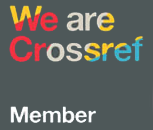The Bulletin of the Institute of Economics of the Russian Academy of Sciences № 6/2023. Economics and Management.
Nadezhda M. Rozanova
Dr. Sci. (Econ.), Professor, Department of Micro- and Macroeconomic Analysis, Faculty of Economics, Lomonosov Moscow State University, Moscow, Russia
ORCID: 0000-0003-3660-0625
INDUSTRY 5.0: A GOLDEN AGE OR A LEAP INTO THE DARK?
 61-77 61-77 |
 319.93 KB 319.93 KB |
Abstract
Technological innovations of the XXI century are introducing Industry 5.0 into our life, with its special economic characteristics and interfirm activity. The article presents a scientific analysis of the new phenomena generated by Industry 5.0, and the new trends that will determine our economic reality in the next 15–20 years. The robotized mechanistic reality of Industry 4.0 is gradually being replaced by human-oriented, sociocentric, ecological and sustainable human-cobot system, where a human performs the role of a creative participant assisted by a collaborative robot partner. A digital ecosystem is replacing a classical firm, which generates both new possibilities for economic development and new risks in terms of digital monopolization within virtual industries. The optimal balance between profitability and sustainability requires efficient government regulation based on a deep understanding of the nature of Industry 5.0.
Keywords: industrial economics, Industry 5.0, innovations, digital economy, firm, digital ecosystems.
EDN: JXQKBZ
DOI: https://doi.org/10.52180/2073-6487_2023_6_61_77
References
- Schwab K. The Forth Industrial Revolution. M.: Eksmo, 2016 (In Russ.).
- Ageev A.I. Management of the Digital Future // The World of New Economy. 2018. 12. No. 3. Pp. 6–23. DOI: 10.26794/2220-6469-2018-12-3-6-23 (In Russ.).
- Galushenko, A., Olefirenko, A. Paradigm of Integrated Enterprise Managing (IEM) System as Universal (Organization-Independent) Enterprise Operating System from Real Digital Transformation of Real Economy to Economical Singularity // Asian Business Research Journal. 2020. No. 5. Pp. 28–42.
- Olefirenko A., Galuschenko A. Major Features, Benefits, and Prerequisites for Intelligent Enterprise Managing System // Research in Social Sciences and Technology. 2018. Vol. 3. No. 3. Pp. 68–91.
- Arens Yu.A., Katkova N.A., Khalimon E.A., Brikoshina I.S. The Fifth Industrial Revolution as Innovations in Biotechnology and Neuronets // E-Management. 2021. Vol. 4. No. 3. 11–19. https://doi.org/10.26425/2658-3445-2021-4-3-11-19 (accessed: 28.10.2023). (In Russ.).
- Nahavandi, S. Industry 5.0 – A Human-Centric Solution. Sustainability. 2019. Vol. 11. 16: 4371. Available at: https://doi.org/10.3390/su11164371 (accessed 21.10.2023)
- Raynolds C.W. Flocks, Herds, and Schools: A Distributed Behavioral Model // Computer Graphics. 1987. Vol. 21. No. 4. Pp. 25–34.
- Vodolazskiy I.A., Egorov A.S., Krasnov A.V. Swart Intellect and Its Methods of Realization // Young Researcher. 2017. No. 4 (138). Pp. 147–153. https://moluch.ru/archive/138/38900/ (accessed: 31.10.2023). (In Russ.).
- Babkin A.V., Shkarupeta E.V., Plotnikov V.A. Intellectual Cyber-Social Ecosystem of Industry 5.0: Definition, Nature, Model // Economic Revival of Russia. 2021. No. 4 (70). 39–62. (In Russ.).
- Sergeyev A.Yu., Shirokova O.V. Fraud in a Digital Society in the Context of Social Change // Digital Sociology. 2023. Vol. 6. No. 1. Pp. 59–71. (In Russ.).
- Anstis S., Barnett S., Chan S., Leonard N., Deibert R. The negative externalities of cyberspace insecurity and instability for civil society // In Cyberspace and Instability / Eds. Chesney R., Shires J., Smeets M. Edinburgh. Edinburgh University Press. 2023. Pp. 240–277.
- Aguirregabiria V., Gu J., Luo Y., Mira P. Diffusion of COVID-19 in Social and Production Networks: Simulation Evidence from a Dynamic Model // Annals of Economics and Statistics. 2021. June. No. 142. Pp. 179–210.
- Herskovic B., Ramos J. Acquiring Information through Peers // The American Economic Review. 2020. Vol. 110. No. 7. Pp. 2128–2152.
- Awaya Y., Krishna V. Information Exchange in Cartels // The RAND Journal of Economics. 2020. Vol. 51. No. 2. Pp. 421–446.
- Biglaiser G., Cremer J. The Value of Incumbency When Platforms Face Heterogeneous Customers // American Economic Journal: Microeconomics. 2020. Vol. 12. No. 4. Pp. 229–269.
- Ellison G., Ellison S.F. Search, Obfuscation and Price Elasticities in the Internet // Econometrica. 2009. Vol. 77. No. 2. Pp. 427–452.
- Ellison G., Wolitzky A. A Search Cost Model of Obfuscation // The RAND Journal of Economics. 2012. Vol. 43. No. 3. Pp. 417–441.
- Roos N., Smirnov V. Collusion with Intertemporal Price Dispersion // The RAND Journal of Economics. 2020. Vol. 51. No. 1. Pp. 158–188.
- Risi E., Pronzato R. Smart Working is not so Smart: Always-On Lives and the Dark Side of Platformisation // Work Organisation, Labour & Globalisation. 2021. Vol. 15. No. 1. Pp. 107–125.
- Leonardi E., Pirina G. Uber in the Portuguese Gig Economy: a Laboratory for Platform Capitalism // Work Organisation, Labour & Globalisation. 2020. Vol. 14. No. 2. 46–63.
Manuscript submission date: 02.11.2023
For citation:
Rozanova N.M. Industry 5.0: a golden age or a leap into the dark? // Vestnik Instituta Ekonomiki Rossiyskoy Akademii Nauk. 2023. № 6. Pp. 61-77. (In Russ.). https://doi.org/10.52180/2073-6487_2023_6_61_77 EDN: JXQKBZ








